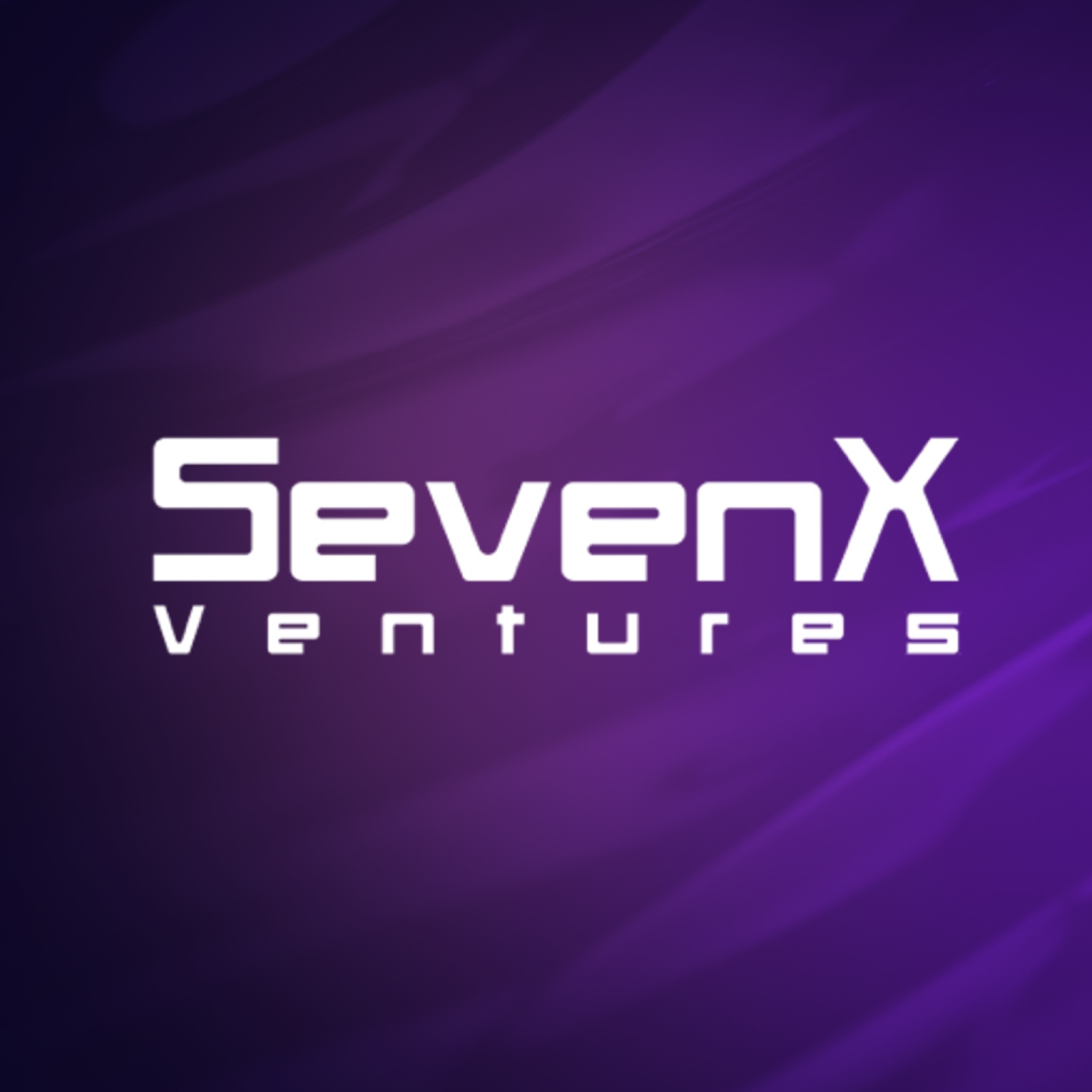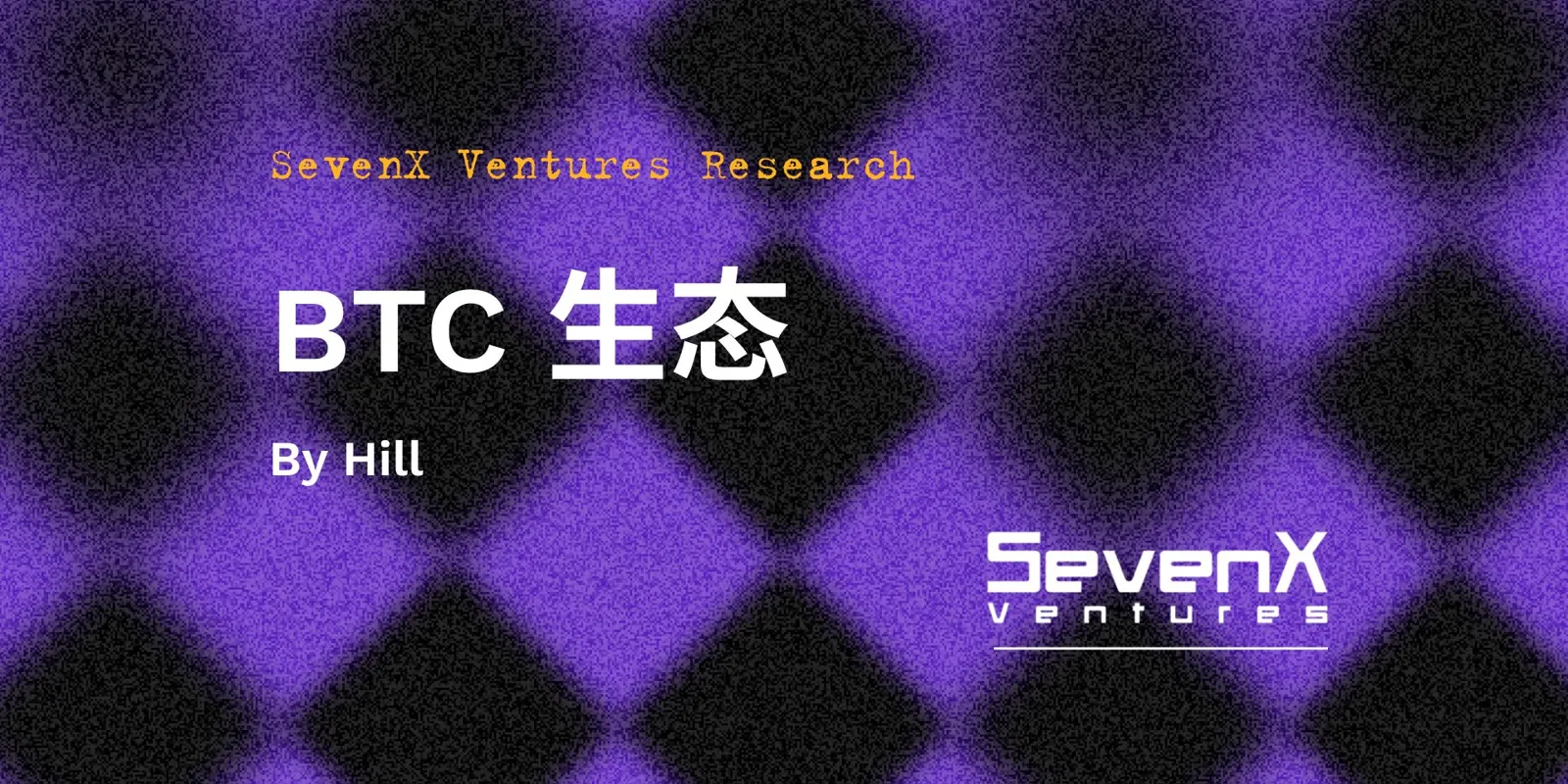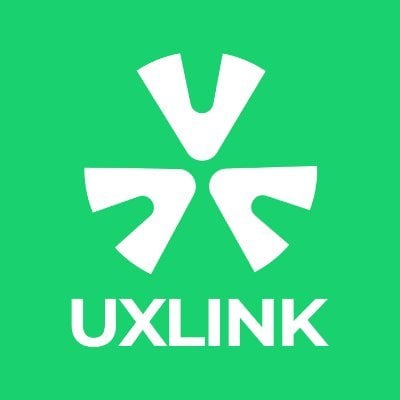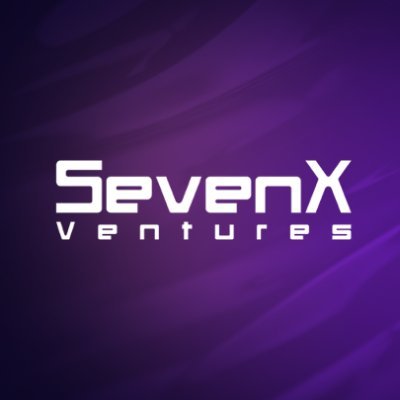UXLINK: Dual-use in progress
Author: Yinghao, SevenX Ventures
1. Introduction
SevenX Ventures is pleased to participate in the investment of UXLINK, a globally leading group-based Web3 social platform.
We believe that UXLINK has found a clever balance at the intersection of the fundamental principles of social interaction, the essential laws of broad socialization, and the core concepts of Web3.
Jon, founding partner of SevenX Ventures, stated, "Through profound insights into the genuine needs and pain points of Web3 users and project parties, UXLINK leverages the immense power of familiar trust relationships for network effect chain reactions, combined with Web3's intrinsic incentive mechanisms and wealth effects, to become the fastest-growing group-based Web3 social platform with the highest quality user accumulation and strongest monetization capabilities. At the same time, UXLINK is built on the core principles of openness, modularity, and ease of use, creating a convenient development environment for various project parties and developers, enabling them to establish deep and sticky connections with target users, thereby further solidifying network depth and expanding network boundaries. From this perspective, we are optimistic about UXLINK's ability to cultivate asset issuance and trading capabilities through socialization, becoming a key hub linking Web3 infrastructure and application scenarios."
2. UXLINK's Narrative, Products, and Achievements
Achievements
UXLINK introduces a new way of user connection and organizational form through the "Link To Earn" trust mechanism based on familiar relationships and the disruptive "Web3 Group," forming a unique protocol and data layer that empowers developers in the Web3 space. As of now, UXLINK has over 5.7 million registered users, more than 100,000 groups, over 1 million daily active users on DAPP, and over 300,000 daily active users on-chain. Additionally, UXLINK's first season airdrop is currently underway, targeting the top 10% of quality users, with a scale exceeding 550,000.
Narrative and Products
UXLINK is dedicated to leading an integrated social ecosystem that encompasses Web3 traffic entry, social trading, and infrastructure:
Product vision diagram:

Product architecture diagram:

UXLINK's products are divided into three layers.
First Layer: Application Layer
This mainly includes two types of applications: UX Discover and Social DEX, supporting users to socially discover, participate in, and invest in suitable crypto projects and assets in group scenarios, while also allowing third-party developers to create various applications.
Second Layer: Protocol Layer
This mainly includes social protocols based on real-world social relationships, allowing users to truly own their social relationships and data, and supporting developers in their development. Developers can create high-quality growth and personalized user services, such as AI algorithms, recommendations, and group formations, similar to developing mini-programs in WeChat or Facebook Marketplace in Facebook. Social data can effectively address the common issue of data silos in the Web3 world.
Third Layer: Social Liquidity Layer
In planning: This is a user-sovereign infrastructure that allows social relationships and data to be assetized and flow, supporting users and developers to securely circulate their social assets across different public chains and Dapps.
Both the second and third layers can serve as unique and effective infrastructures for developers.
3. UXLINK's Essence in Our Eyes
Real Social Interaction
UXLINK is a migration and deepening of real social relationships and scenarios, innovating them in conjunction with the essence of Web3.
UXLINK focuses on familiar relationships, which is essentially a simulation of real-world social states. In the real world, while there are one-way relationships (such as following celebrities), these cannot be termed social relationships, so there is no "one-way social" in the real world. Social interactions in the real world are always two-way, where subjects and objects connect through some form of intersection, which can be communication, collaboration, or cooperation, etc.
Familiar social interaction is the most important form of real social interaction. Most of the interactions mentioned above occur with acquaintances throughout a person's life, as there is a trust relationship based on direct/indirect endorsements among acquaintances, which is a necessary condition for recommendations, transactions, and other behaviors. At the same time, familiar social interaction can naturally transition from one-to-one to many-to-many, group forms, making it easier to evolve from a linear to a three-dimensional structure, thus establishing the foundation for network effects.
In other social scenarios, such as stranger socializing or social media, non-familiar relationships can also transform into familiar relationships. Stranger socializing serves as a lever for expanding the network effects of familiar social interaction. The "group" scenario provided by UXLINK is very suitable for completing this transformation process.
The core technology of familiar social interaction is frequency and density. If we closely observe the DAU and MAU ratios of global social products, we find that WhatsApp, Facebook, and Instagram rank at the top, all of which focus on familiar social interaction. The more familiar relationships one has, the higher the usage frequency, and high-frequency scenarios can even drive low-frequency scenarios.
Based on these thoughts, when we deduce "what kind of social product will succeed," we find that both paths of UXLINK can respond well to this question. One is to follow the trend, that is, to bring real-world social interaction online, creating unique forms and functions of interaction through special online organizational forms. In this regard, Telegram (TG) is currently a subset of WeChat (which also has Moments and Video Accounts), but the group function is entirely consistent. The second is to create new scenarios, such as matching, puzzles, dating, etc. UXLINK's answer is: providing everything needed to navigate Web3.
Trust Network
Based on the essence of real social interaction, UXLINK is fundamentally a data production machine.
By mining and migrating real social relationships, UXLINK forms several types of data: familiar-familiar, familiar-stranger; person-group, person-network, person-project, person-asset, as well as higher-order data with more complex correlations built on these types of metadata. In the first phase, data is generated into metadata through the aforementioned network nodes, and in the second phase, the metadata itself possesses the ability to regenerate data, meaning the data can self-grow.
In a non-closed-loop social network, the core experience of users is largely determined by data, that is, the type of objects users interact with, the information they obtain, and the assets they are distributed and recommended, etc. The data returned after user interactions will further optimize this data model. Therefore, UXLINK's data machine can maximize the enhancement of user core experiences in existing scenarios.
With a vast and high-quality data foundation, UXLINK's network will gradually grow from a familiar network to a trust network.
In a scenario involving heavy assets and financial behavior, user trust in the relationship network is crucial. Trust brings a sense of security, which encourages users to continue engaging with the network: earning money once, twice, thrice, and users will keep choosing UXLINK. UXLINK nurtures an endogenous "confidence level" within the familiar network and continuously raises the threshold of this confidence level, leading to significant user loyalty over time.
Once a trust network is formed, UXLINK provides users and developers with a selection mechanism based on high confidence. The main scenario of UXLINK is to bridge users with various project parties that have diversified token incentive models. Users fear being "scammed" or "exploited" by project parties, while project parties fear acquiring a large number of fake or low-quality users. We must admit that many current token incentive models have strong Ponzi attributes, which is why UXLINK has achieved the separation and coupling of trust networks and Ponzi economics, using a high-confidence network to support Ponzi, providing the maximum mutual trust environment for users and projects.
Assets and Finance
After this bull market, one of the clear signals from the industry is that one of the core focal points of Web3 is the subtle penetration of assets and finance, as well as the catalysis of fragmented speculation, gaming, and profit-seeking behaviors. In other words, assets and finance are the battlegrounds for Web3 applications, and any application must be deeply conceived around assets, finance, and users.
On the asset side, UXLINK's imaginative space has three layers.
First is the activation of existing asset trading. Familiar relationships have been established on a large scale in Web3 for the first time, representing a "new relationship." By combining UXLINK's complete set of tools (such as UX Growth) and its transformation of native TG scenarios (such as Social DEX), UXLINK activates existing asset trading through the three levers of new relationships - new scenarios - new tools, enhancing the frequency of asset turnover.
Second is the issuance and circulation of new assets. The massive promotion of assets by numerous projects has two levels: the first level is the quantity of assets, and the second level is the types of assets. In this bull market, we have seen a dazzling array of new assets, not only with new narratives and hot topics but also with inscriptions, runes, and other new standards. As a network rooted in TG, UXLINK can perfectly accommodate the issuance of new assets, allowing various projects to drive their operations at different lifecycle stages through assets. UXLINK enhances the speed of asset circulation through the three links of new assets - new channels - new operations.
Third is the inclusiveness of assets. As mentioned above, UXLINK does not impose restrictions on asset types; its trading scenarios can occur outside of specific contexts. Therefore, UXLINK can accommodate different types of assets such as tokens, NFTs, and even points, lowering the accessibility threshold for assets.
On the financial side, in addition to the aforementioned asset trading, behavior monetization is also an important dimension. Users interact with different objects within the UXLINK ecosystem, which can be termed "interaction" or "contribution." Users continuously contribute their social relationships, attention, trust, and data. The core scenario of UXLINK is to monetize contributions, allowing users to be the actual beneficiaries of their contribution behaviors rather than the platform itself.
It is worth mentioning that once the attributes of assets and finance are solidified, economies of scale are needed as leverage to amplify them, and the flip side of network effects is precisely economies of scale. The asset efficiency brought by UXLINK's familiar network is, to some extent, far superior to that of marketplaces or exchanges, and we look forward to that day.
Connector
True to its name, UXLINK is also a super connector, playing the role of a hub in two closed loops.
First is the small closed loop, namely user - product - developer. UXLINK effectively links these three through its product stack, meeting the underlying real needs of users and developers, continuously solidifying and forming a healthy user-product community.
Second is the large closed loop, namely infrastructure - traffic - applications. UXLINK possesses the potential to effectively close the loop between the two major camps of Web3: infrastructure and applications, through its three-layer structure of Layer/Chain - Protocol - Dapp combined with an invisible trust network.
In today's somewhat "fragmented" Web3 market, we expect UXLINK to become the adhesive and connector of the industry through these two levels of closed loops.
4. UXLINK's Advantages and Potential
S-Class Team and First Principles
UXLINK is a typical configuration led by S-class founders with an S-class team. The team has years of entrepreneurial experience in the internet industry, with exceptionally strong product research, growth, operations, and financing experience, having managed social products with over 100 million users. After embracing Web3, the team has demonstrated remarkable iterative capabilities: not only quickly learning the concepts, technical frameworks, and token economies of Web3 but also finding a new positioning and angle for UXLINK beyond the explorations of predecessors. Meanwhile, the team continuously exhibits strong execution and resource integration capabilities, enabling them to deliver products, launch large campaigns, and connect with massive collaborations in a short time, all stemming from their ample frontline entrepreneurial experience.
Another advantage of the UXLINK team is that they start from first principles, possessing a strong ability for independent thinking. When conceptualizing each product feature, the team begins with actual user needs and then appropriately seeks points of integration with Web3, avoiding the pitfalls of PMF vacancies caused by pseudo-needs.
Establishment of Core Resources and Monopoly Potential
Familiar relationship networks are core resources in any new paradigm of internet scenarios and present opportunities for reshaping in Web3.
A person feels uncomfortable after five minutes without checking WeChat, and a Web3 practitioner feels anxious after half an hour without scrolling through TG. This is because our threshold for familiar relationships has been elevated to its peak by the mobile internet; just a brief disconnection from the familiar network can trigger severe withdrawal symptoms. Once a familiar network is formed, individuals have no choice but to join or leave this network—leaving this network means facing abandonment. This is the objective monopoly of familiar networks.
As the first Web3 social product deeply focused on familiar relationships, UXLINK is rapidly building a familiar network and achieving phased leadership. One can envision that if UXLINK is the builder of the Web3 familiar network, it has the potential to monopolize this core resource.
The objective monopoly of the familiar network will further extend to the rights to define scenarios and price resources: the main scenarios attached to this network will be delineated by UXLINK; any commercial circulation within this network will also be priced by it, as the demand and stickiness of suppliers, demanders, and users towards this network will only grow stronger.
On the other hand, products with first-mover advantages will also exert a certain degree of objective monopoly over users' mindsets and habits, especially as UXLINK layers wealth effects on top of familiar relationships. Users will gradually feel that they can continuously participate in good projects, invest in good projects, and earn money within the UXLINK ecosystem, while project parties will increasingly discover that they can quickly and efficiently promote activities, acquire users, and distribute assets within the UXLINK ecosystem.
Self-Reinforcing Familiar Network and Brand
Let’s revisit Metcalfe's Law: the value of a network increases with the number of users, meaning the value of a network equals the square of the number of nodes within it, and the network's value is proportional to the square of the number of connected users.
This is the charm of social networks—they possess a continuous positive self-reinforcing effect. However, this positive self-reinforcing effect requires the network to reach a certain density and break through a "critical point." We cannot yet conclude whether UXLINK has surpassed this critical point of social networks, but it is undoubtedly rapidly approaching this critical point.
Similarly, the same phenomenon is occurring on the brand front. UXLINK is continuously reinforcing its "quality assurance" in the minds of users and project parties through deep cooperation with the highest quality project parties in the industry and by selecting high-quality real users using the most scientific methods, achieving self-enhancement of brand power.
When the Pendulum of Web3 Applications Swings to the Midpoint
From an industry observation perspective, the Web3 industry has been exploring large-scale applications for many years. If we borrow the "pendulum theory," the pendulum of application developers has been swinging between the "purist" and "pragmatist" camps.
"Purist" developers take the native concepts of Web3/blockchain/cryptocurrency as their development guidelines, emphasizing decentralization, maximum on-chain presence, data ownership, and no deployment, breaking many application development frameworks from the Web2 era and creating a batch of purist applications. The other side of purist applications is that they are entirely developer-centric, leading to a situation where the PMF of such applications is always in a state of having resources but no cooking, as users show little interest in their practical value beyond participating in incentive activities. However, applications are ultimately used by users, not developers, which is the issue faced by purists.
"Pragmatist" developers often consider "what does blockchain/cryptocurrency bring to these applications?" as the most important question during the development conceptualization phase. Many pragmatist developers choose "innovative token incentive models" as the answer to this question. However, when developers focus most of their attention on token incentive models, many applications become a mechanical combination of "Web2 applications + tokens." Meanwhile, users' attention is drawn solely to token incentives, leading such applications towards Ponzi schemes, making it difficult for them to maintain vitality when more robust economic models emerge.
In contrast, UXLINK adopts a narrative and product conception that embodies "holding both sides," possessing stronger extensibility and limitless potential. UXLINK stands from the developer's perspective, integrating decentralization, no deployment, modularity, and other development concepts into its protocol system, creating a highly free and smooth development environment for developers; it also stands from the user's perspective, providing users with the usage scenarios of native familiar social interaction in Web3, allowing them to fully enjoy both the native incentives within UXLINK applications and the external incentives from a multitude of cooperative project parties.
It is this "holding both sides" value that gives UXLINK sufficient scarcity, finding an elastic area between the "purist" and "pragmatist" camps, allowing developers and users to intersect in a more harmonious manner, and together exploring the real and feasible path to large-scale applications through "doing, using, and experiencing."











